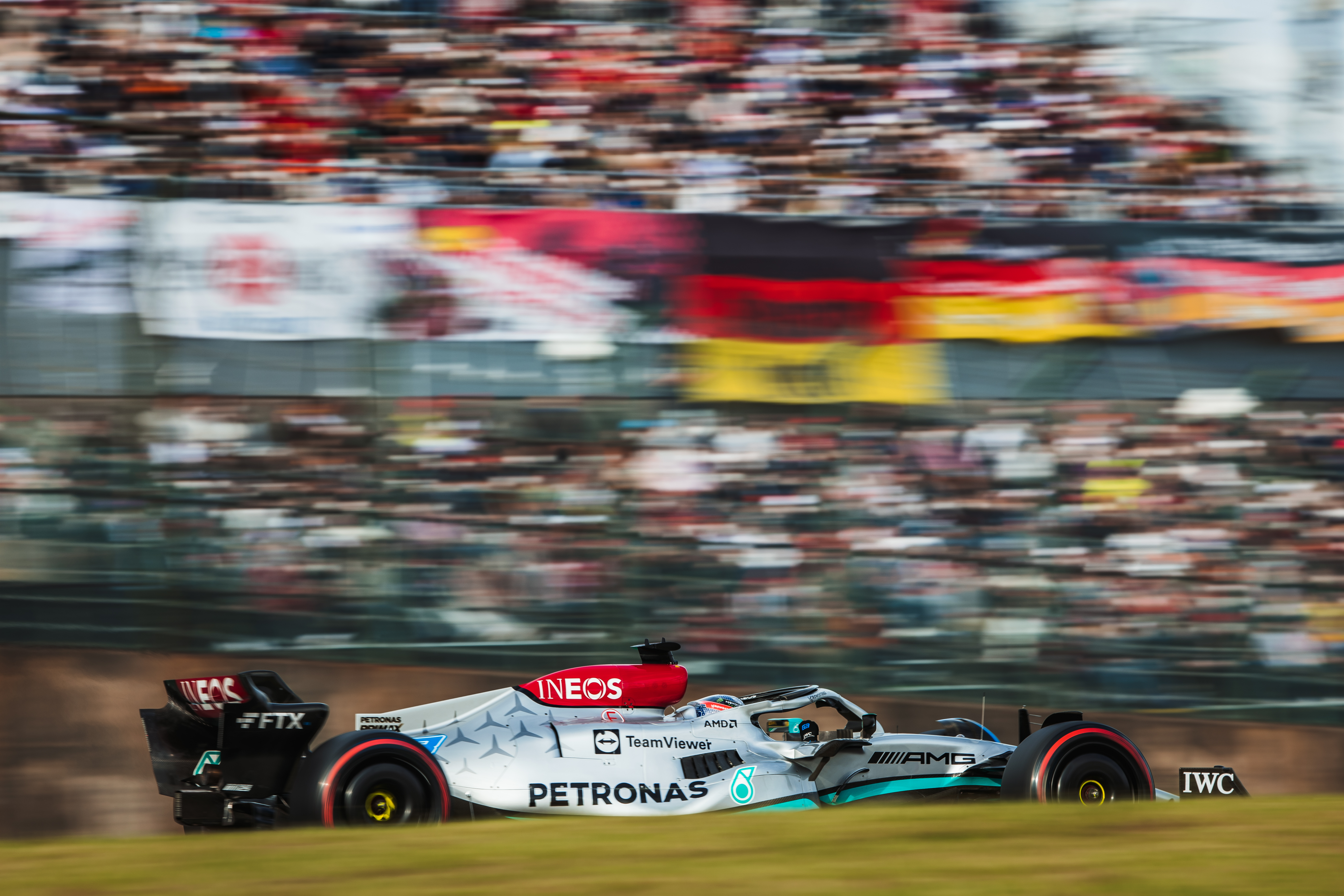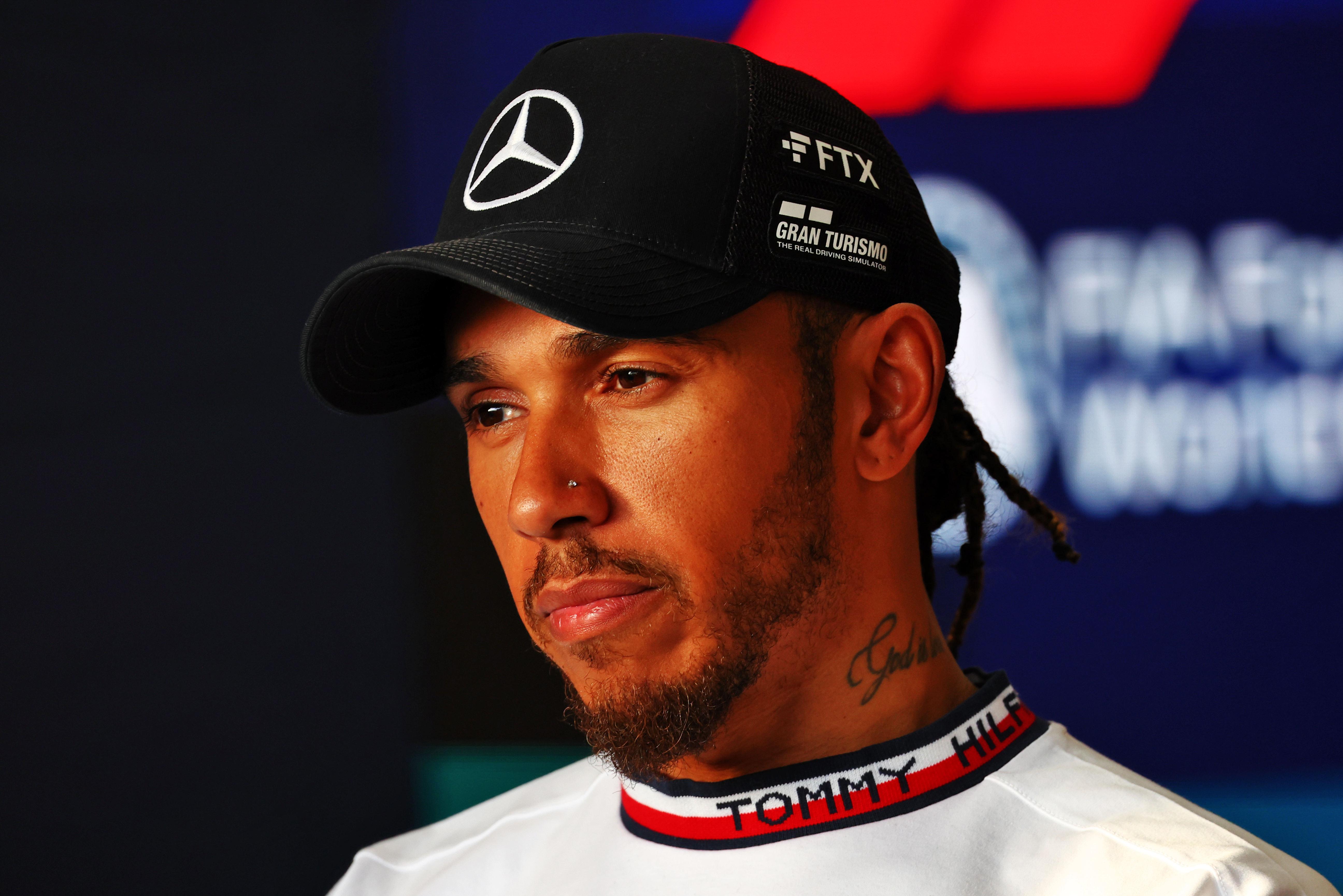Up Next

Mercedes’ disappointing Japanese Grand Prix qualifying session was a bigger step back than the Formula 1 team expected even though it knew its Friday practice one-two was misleading.
Lewis Hamilton and George Russell will start Sunday’s race at Suzuka from sixth and eighth on the grid after Mercedes fell back in a much more representative qualifying session.
The team’s lofty practice positions were a result of using an extra new set of intermediates at a good moment on a rain-hit day so Mercedes never expected that to translate even if conditions remained the same.
But in Saturday’s dry qualifying session it was clear Mercedes was in a battle to be best of the rest behind Red Bull and Ferrari, and actually ended up outqualified by Esteban Ocon’s Alpine.
Hamilton was 0.957 seconds from Max Verstappen’s pole lap and Russell was also outqualified by the second Alpine of Fernando Alonso.
“We didn’t expect it to be this difficult,” Russell admitted.
“We definitely didn’t expect to be in the fight for pole, I think we’ve learned that by now and we really need specific circuits to be in a position to fight for pole position.
“But certainly we didn’t expect to be that far behind the leader and behind the Alpines.

“But it’s not the first time this season. Whether it’s an Alpine, whether it’s a McLaren, there’s quite a theme that we have difficult Saturdays.”
Russell and Hamilton felt that the car was too draggy to be competitive at Suzuka.
Technical director Mike Elliott said the team still believes it was the quicker solution that using a smaller rear wing, indicating the car’s characteristics are simply not suited to what Russell calls “the first high-downforce circuit where you have long straights as well”.
Russell reckoned Mercedes was losing “seven or eight tenths to Red Bull on the straights and this circuit’s certainly exposed that weakness of ours”.
Hamilton went as far as claiming the Red Bull was faster without the drag reduction system activated than Mercedes with the rear wing flap open, although this does not look to be correct based on the (limited) available free practice three data.
“We just weren’t that quick on the straight and that’s where we lose most of our time,” said Hamilton.
“Otherwise, the car feels really good.
“I’m generally really happy with the way qualifying went. Nine tenths off is never a great look but I try to look at the positives.
“Honestly going into qualifying I didn’t know how far we’d be off. I was a bit surprised that we were only three tenths off in Q2 and then nine tenths in Q3.

“I don’t understand where the time goes, I know a large amount, three quarters of that, is just on the straights.”
Elliott admitted this level of performance was below Mercedes’ pre-event expectations, which is a shift from recent events where Mercedes’ improved understanding of its car meant it had a good idea of which tracks would be strong and which would be weak.
“We weren’t expecting it to be a really good circuit for us,” said Elliott.
“We were expecting it to be a little more challenging and I think where we want to run the car optimally in downforce level appears different to where others want to run.
“That’s part of the way we’ve developed the car and part of what we need to adjust over the winter.”





